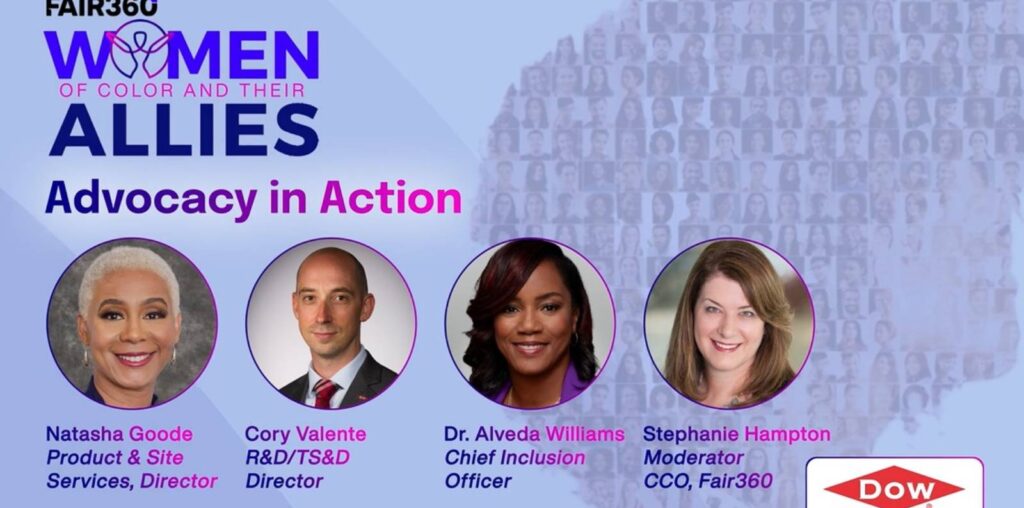Dow’s (No. 3 on Fair360’s 2024 Top 50 list) belief in advocacy and allyship has helped pave the way toward its goal of being the “most inclusive material science company in the world,” according to Chief Inclusion Officer Dr. Alveda Williams.
During a panel titled “Advocacy in Action” at Fair360’s 7th annual Women of Color and Their Allies (WOCA) event, Williams talked about ensuring equal access to opportunities and leadership roles for all employees, especially those from underrepresented groups.
“We believe in the power of advocacy and allyship to not only acknowledge but to dismantle longstanding, historic and systemic barriers,” she said.
What Does Inclusion Look Like at Dow?
Equity and inclusion show up in several different ways at Dow. Williams said inclusion looks like:
- Programs
- Partnerships
- Personal relationships
As the leader of Dow’s office of inclusion, Williams said the company only makes progress by working with its Employee Resource Groups (ERGs), businesses and different functions.
Inclusion is “targeted programs that are put in place with intentionality to address unmet needs and to close the gaps we see in the data,” Williams said. “And, of course, personal relationships that are built brick by brick, one at a time, working together and taking the time to get to know each other and our stories.”
Williams introduced two leaders from Dow who co-lead its Advocacy in Action (AIA) sponsorship program. The program is meant to help Black talent advance in the workplace. The co-leads are:
- Natasha Goode, Product & Site Services, Director
- Cory Valente, R&D/TS&D, Director
Primary Tenants of Advocacy in Action
Goode started out by stating the primary tenants of Dow’s AIA program. They are:
- Matching
- Active Coaching
- Exposure to Executive Leadership
- Networking
- Professional Development
These are the standard tenants of most sponsorship programs. With these alone, Goode said Dow had “mild success.”
To build a pipeline of employees to senior leadership, Goode said the company had to address the elephant in the room. Dow had to address why sponsorship of Black talent wasn’t occurring in a way that would drive change to the business.
From there, Dow landed on three tenants “that truly set Advocacy in Action apart from other sponsorship programs,” Goode said.
The three tenants are:
- Intentional Sponsorship Pairing
- Courageous Conversations
- Experiential Learning/Cultural Awareness
Valente emphasized the intentionality of AIA. The program wasn’t executed for the sake of having a program’ it was done to fill a gap in the organization.
“The intentionality piece is absolutely key,” he said. “It’s very unique to the program. I think it’s what has made it as successful as it is. And Natasha reminds me regularly during our meetings, as we come up with new ideas or new ways to approach things, we always trace it back to, ‘how is this being intentional to solving the problem?’”
Watch the full session recording and check back to our WOCA 2024 event page frequently! We’ll update it with more article recaps over the next week.

